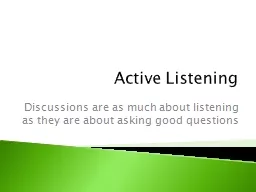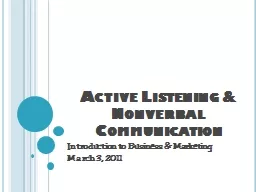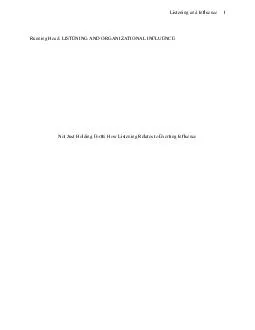PPT-Active-listening Hydrotherapy Hub
Author : eloise | Published Date : 2024-03-13
March 2023 Susan Pellandini Activelistening MODULE OBJECTIVES After completing this chapter the student will be able to Demonstrate ways of listening that draws
Presentation Embed Code
Download Presentation
Download Presentation The PPT/PDF document "Active-listening Hydrotherapy Hub" is the property of its rightful owner. Permission is granted to download and print the materials on this website for personal, non-commercial use only, and to display it on your personal computer provided you do not modify the materials and that you retain all copyright notices contained in the materials. By downloading content from our website, you accept the terms of this agreement.
Active-listening Hydrotherapy Hub: Transcript
Download Rules Of Document
"Active-listening Hydrotherapy Hub"The content belongs to its owner. You may download and print it for personal use, without modification, and keep all copyright notices. By downloading, you agree to these terms.
Related Documents














